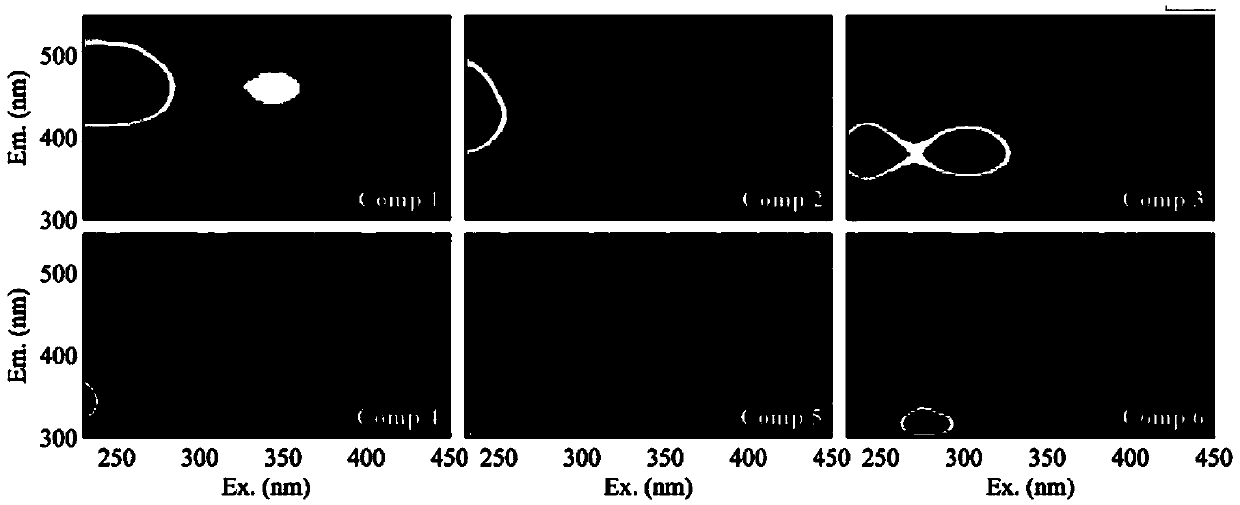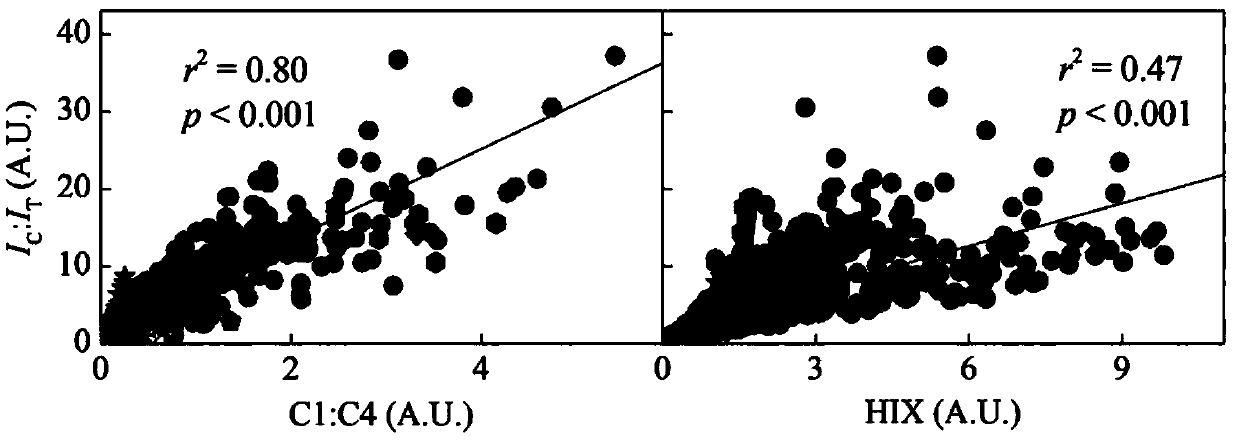Method for Determining the Source of Colored Soluble Organic Compounds Based on Fluorescence Spectrum Integral Ratio
A technology of fluorescence spectrum and organic matter, applied in the direction of fluorescence/phosphorescence, material excitation analysis, etc., can solve the problems of difficult fluorescence spectrum comparison, limit CDOM, etc., and achieve the effect of environmental friendliness and cost saving
- Summary
- Abstract
- Description
- Claims
- Application Information
AI Technical Summary
Problems solved by technology
Method used
Image
Examples
Embodiment Construction
[0023] The method will be further elaborated below by the research results of lakes, reservoirs and tributaries of different sizes, depths, altitudes, hydraulic retention times and nutrient levels in my country, and the research conclusion I C : I T As an effective parameter indicating the source of colored soluble organic matter, it will be further described. From 2004 to 2015, Bosten Lake, Qinghai Lake, Lugu Lake, Chenghai Lake, Erhai Lake, Fuxian Lake, Dianchi Lake, Yangzonghai Lake, Three Gorges Reservoir, Honghu Lake, Donghu Lake, Liangzi Lake, Tianmu Lake were selected in the Northwest, Southwest, and the middle and lower reaches of the Yangtze River. A total of 17 lakes (Table 1), Qiandao Lake, Taihu Lake, Puppet Lake, and Hangzhou West Lake have carried out dozens of field sample collections to construct the fluorescence spectrum integral ratio of colored soluble organic compounds I C : I T A relationship model with the humification index HIX and a parallel factor an...
PUM
 Login to View More
Login to View More Abstract
Description
Claims
Application Information
 Login to View More
Login to View More - R&D
- Intellectual Property
- Life Sciences
- Materials
- Tech Scout
- Unparalleled Data Quality
- Higher Quality Content
- 60% Fewer Hallucinations
Browse by: Latest US Patents, China's latest patents, Technical Efficacy Thesaurus, Application Domain, Technology Topic, Popular Technical Reports.
© 2025 PatSnap. All rights reserved.Legal|Privacy policy|Modern Slavery Act Transparency Statement|Sitemap|About US| Contact US: help@patsnap.com



